Red Bull were so far ahead of the competition last year they didn’t need to bring regular updates to their car.
That was fortunate, as the team had to observe even stricter limits on its wind tunnel use until October, as part of its penalty for breaking the budget cap three years ago.The team therefore can conduct more development work now than 12 months ago, and has used it to produce its first significant update for the RB20.
Red Bull may still be the team to beat this year, but their margin over the competition has been slightly reduced. Ferrari in particular have narrowed the gap, though their victory in the previous round owed more than a little to a rare retirement for Max Verstappen
Nonetheless, Red Bull have brought a package of updates and refinements for their RB20 which they hope will bolster their advantage at Suzuka.
Sidepod inlet
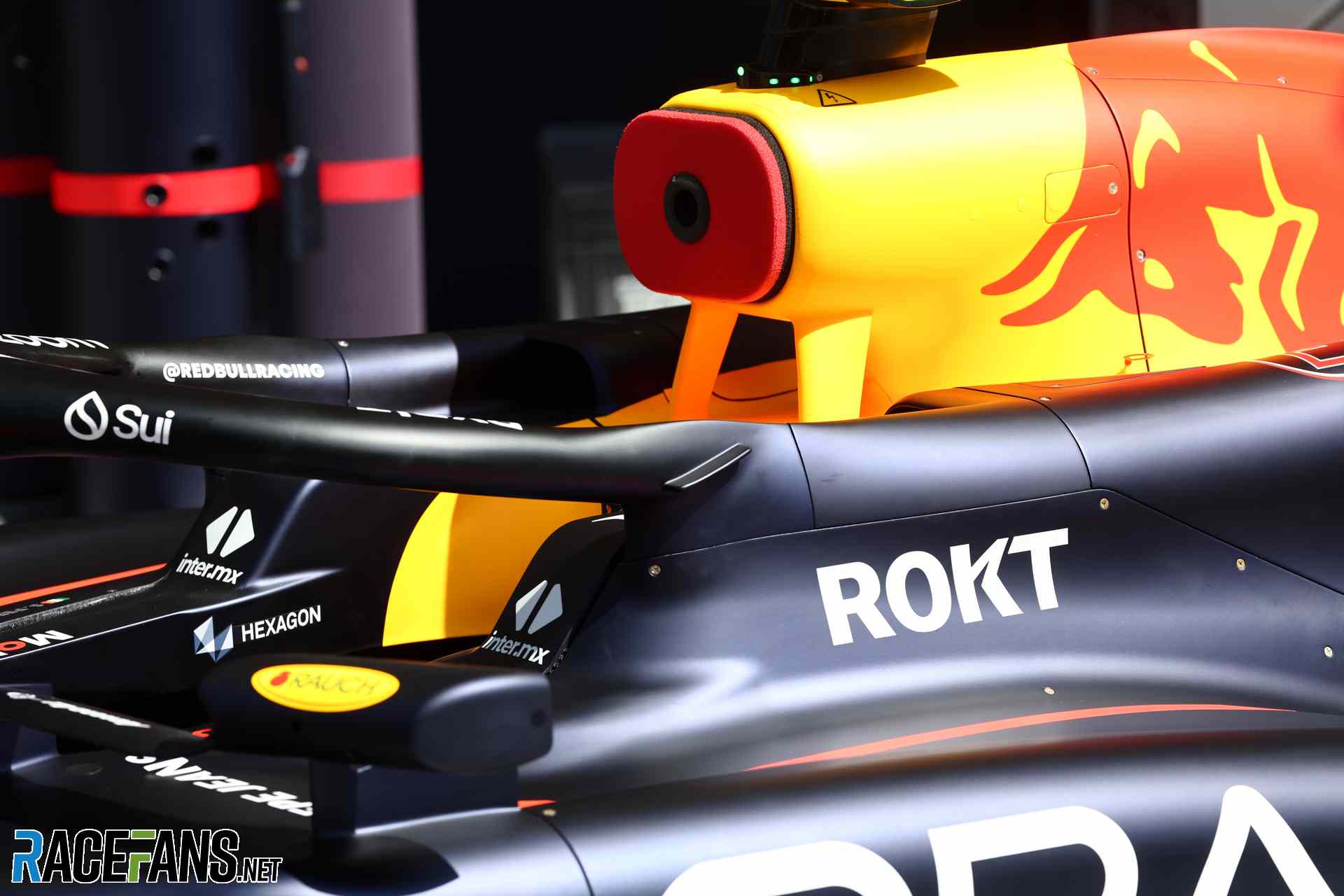
Red Bull are using several apertures to cool the RB20’s internals, some of which are situated in the sidepods, others around the driver’s cockpit. A new pair of inlets have been added either side of the driver for this weekend’s race at Suzuka. The differences can be seen above and below.
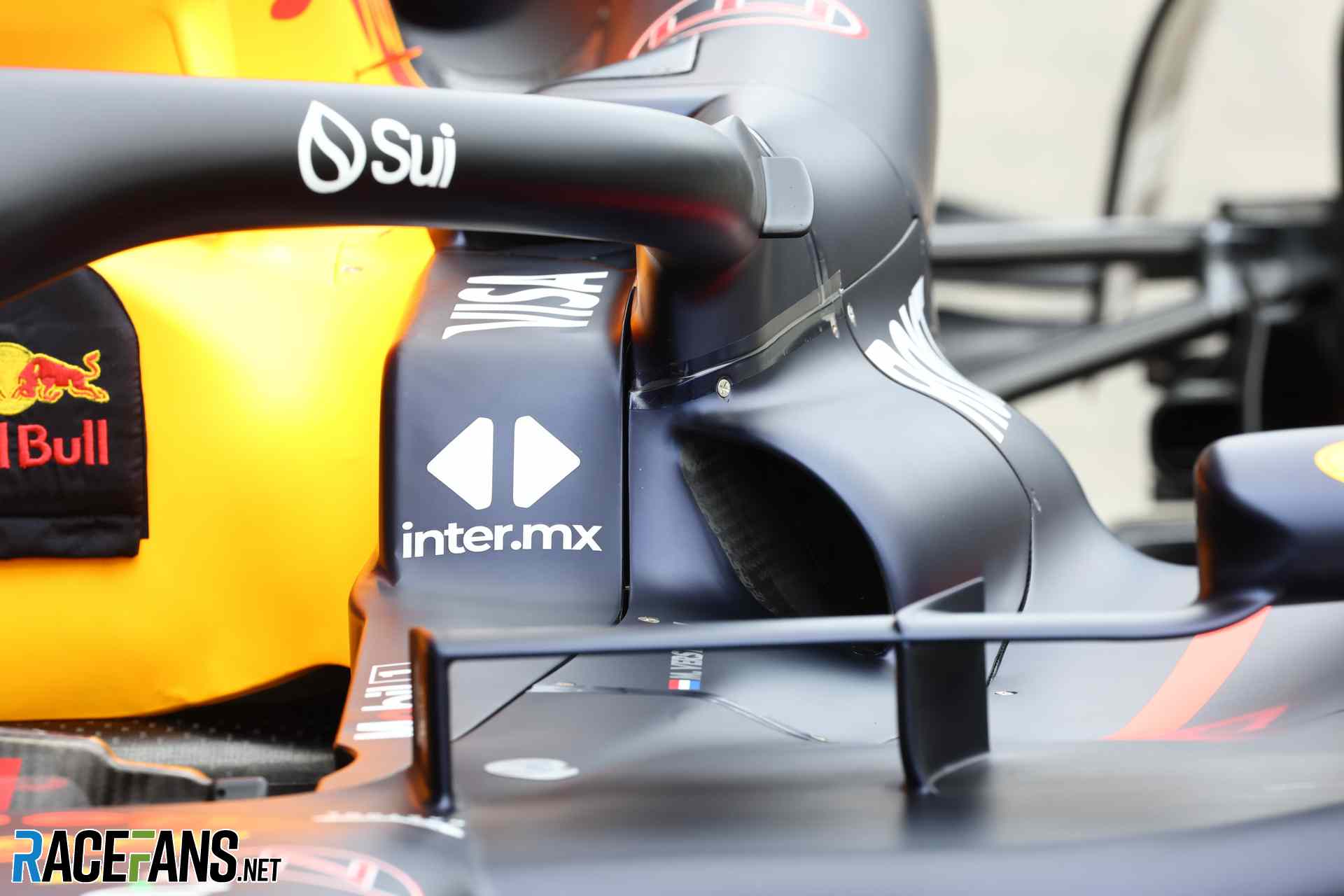
The inlets feed the primary heat exchangers within the sidepods with fresh air.
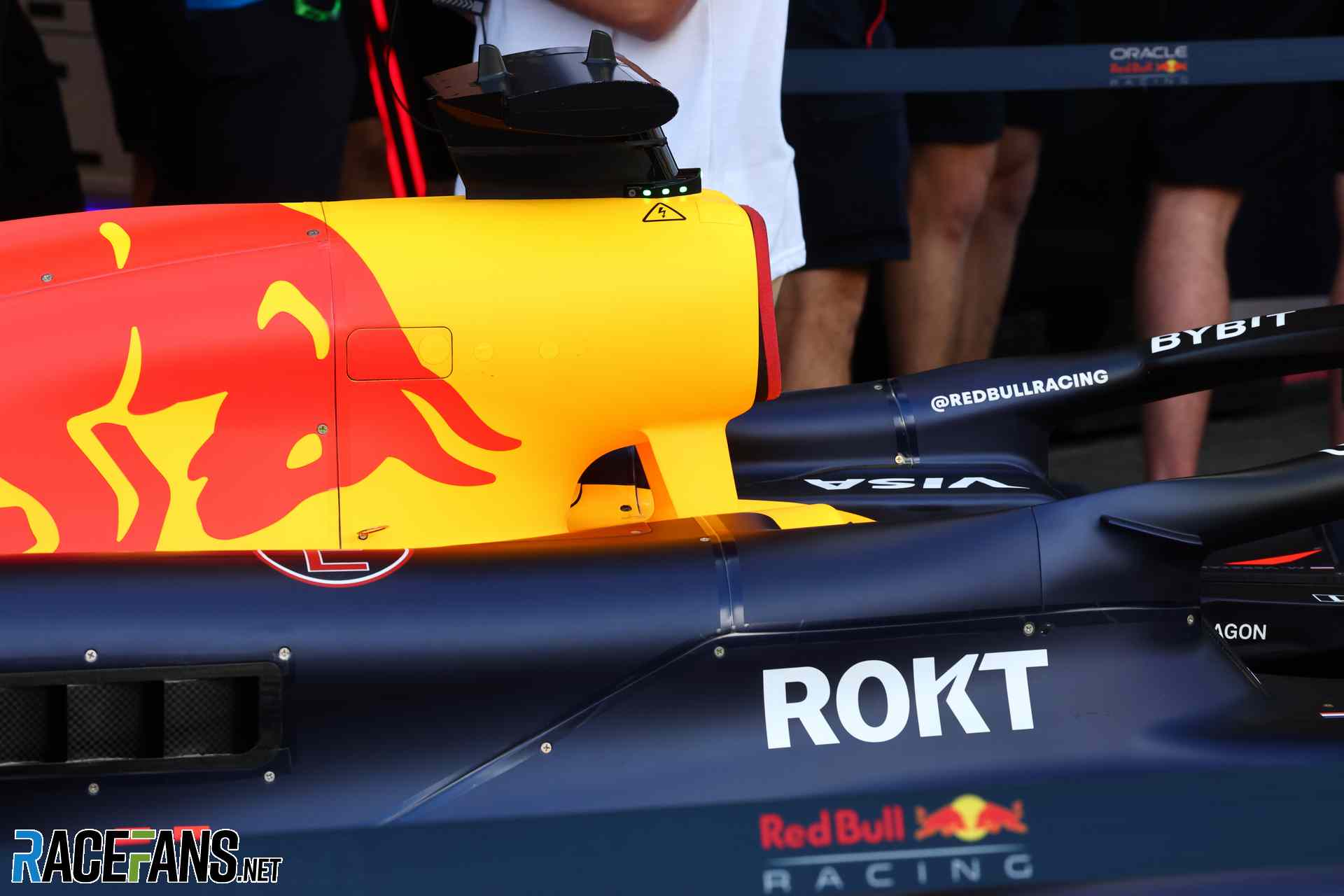
Although the new bodywork disrupts the previously smooth lines along this area of the RB20, Red Bull say it makes a worthwhile trade-off as they “need less exit area which is beneficial downstream.”
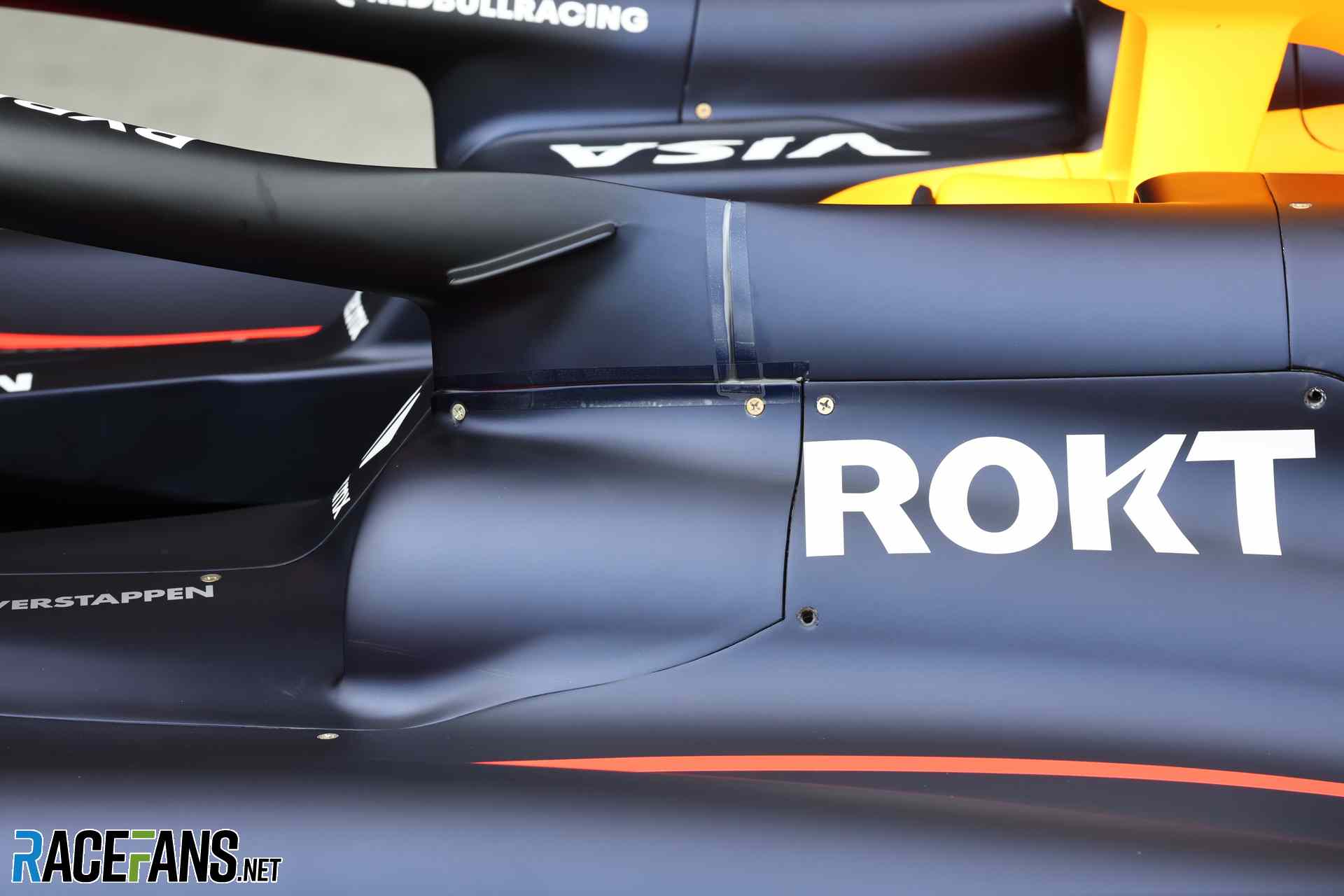
Advert | Become a RaceFans supporter and
Front brake duct
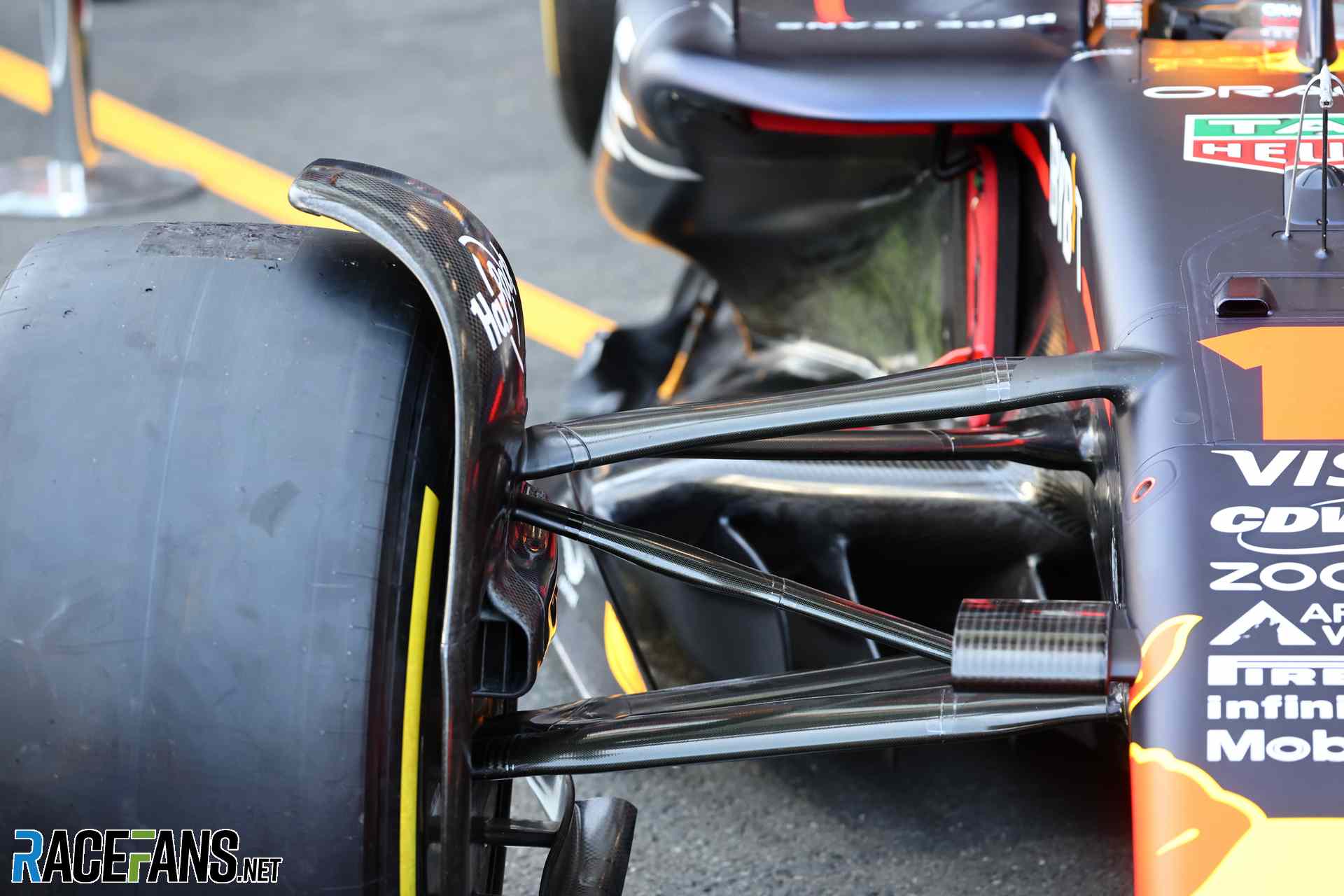
Max Verstappen retired from the previous race in Australia when he suffered a fire at the right-rear corner of his car. This was due to a brake disc which jammed on and overheated.
The driver indicated yesterday this was due to a mistake when the car was put together. Red Bull hasn’t made any changes to that end of the car this weekend, but has tweaked its front brake ducts.
The inlets (pictured) and exits of the ducts have been reduced in size. This is partly because the drivers use the brakes much less at Suzuka than other circuits, but aerodynamic efficiency is of paramount importance, so teams take the opportunity to run smaller ducts.
At previous rounds where less braking effect was needed, such as Jeddah, Red Bull blanked off the inlets as required. However the purpose-built smaller inlets are “more efficient,” they noted.
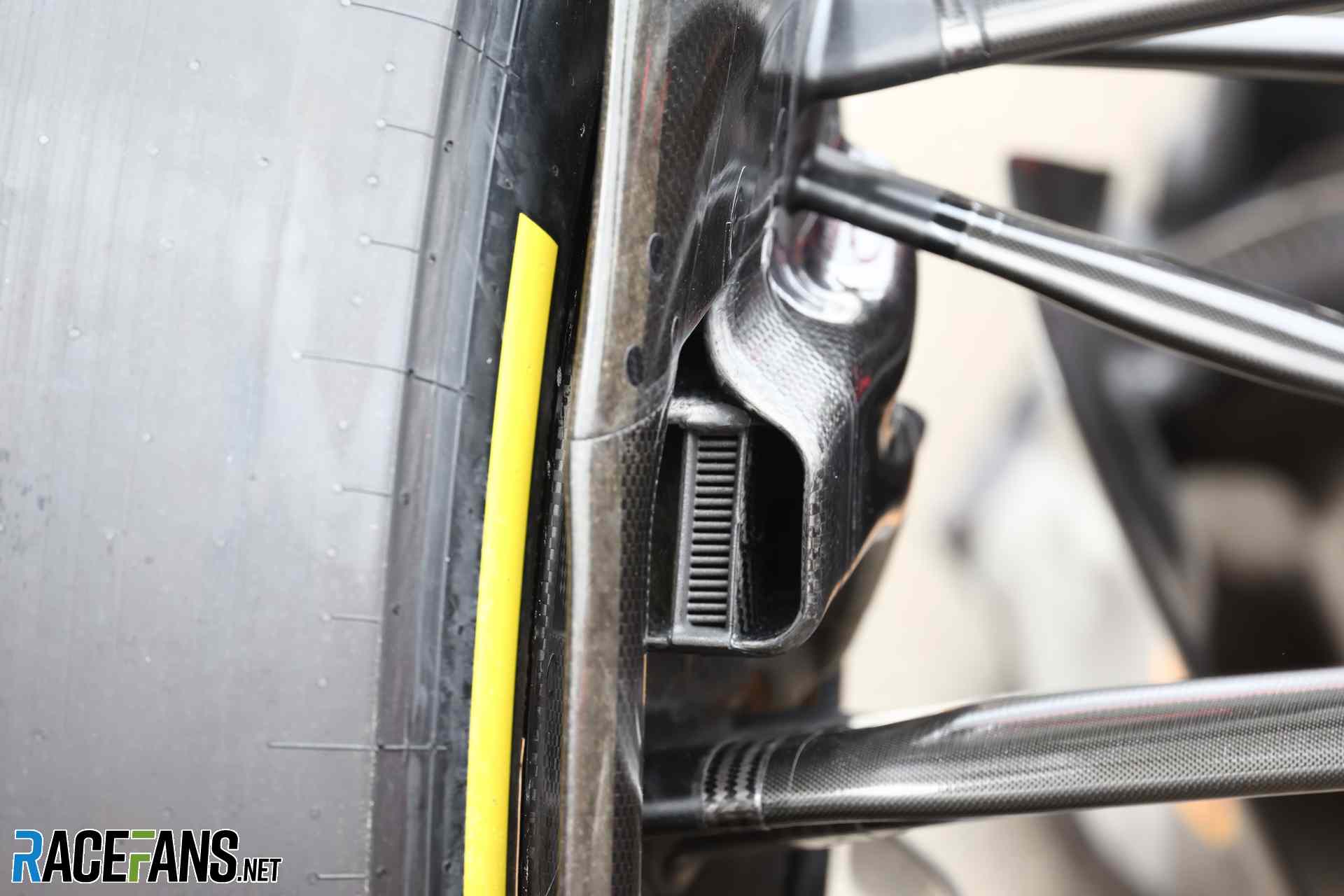
Floor
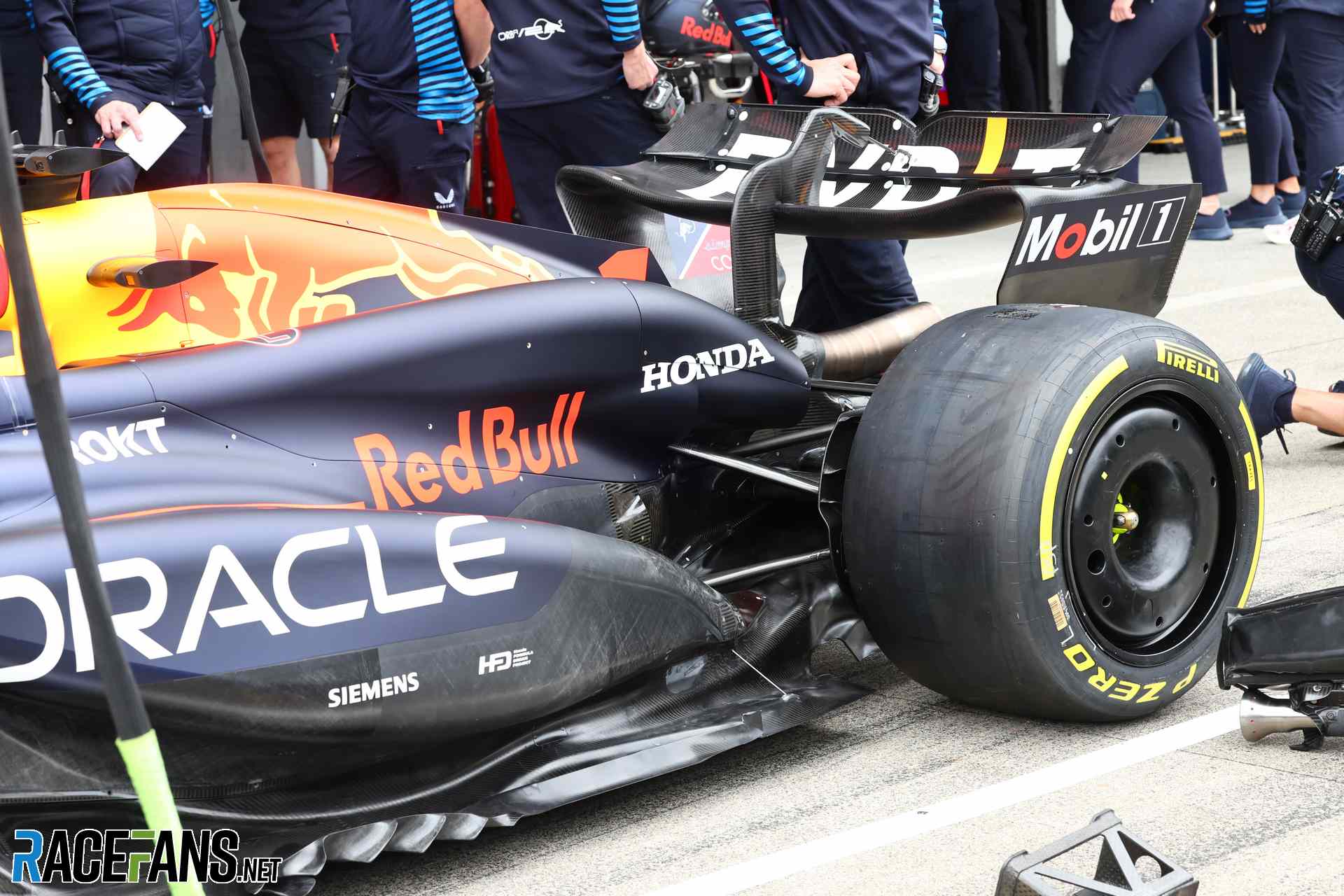
The final change to the RB20 is to its floor, and so largely cannot be seen. The team says these changes are purely aerodynamic, with no alteration to the mechanical parts above.
They include “subtle surface changes [which] have exploited the flow characteristics to extract more load locally whilst maintaining flow stability.” The dimensions of the floor edge have also been revised: “Given knowledge of the flow and pressure feeding the floor edge wing, more camber has been applied to generate more local load whilst maintaining an adequate level of stability.”
Advert | Become a RaceFans supporter and
2024 Japanese Grand Prix
- “Am I in a race here or what?”: How Ferrari aced their Suzuka strategies
- Suzuka showed Mercedes “have a more stable platform” now
- Ferrari’s strategy gains in 2024 are “purely down to the car” – Sainz
- Tsunoda ‘at Verstappen and Alonso’s level’ with Suzuka performance – Marko
- Japan was first race where Red Bull’s winning margin was bigger than last year




Asd
5th April 2024, 10:06
Too bad the pictures don’t even show the 2 inlets inside the cockpit protection bulges.
So, overall, they’ve got 7 air major inlets: 5 air inlets around the driver’s helmet, and the 2 on the sidepods.
Also, the use of a sticky tape is hilarious.
WhatMyMammaSaid (@whatmymammasaid)
5th April 2024, 16:56
You mean the tape over the cracks between the body parts? That’s standard, all teams use it, to improve the air flow.